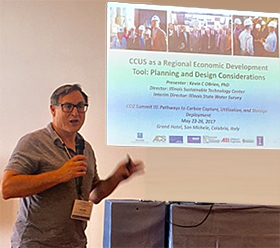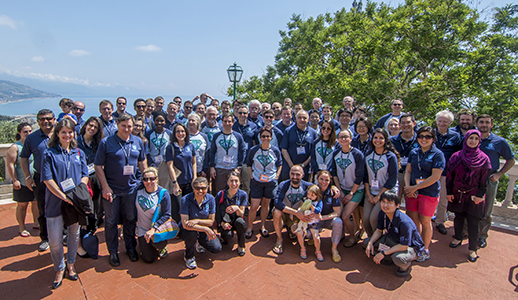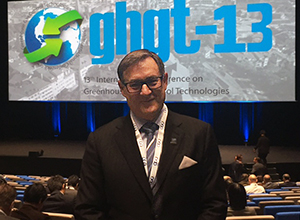Experts worldwide are meeting this week in Calabria, Italy to focus on ways to deploy carbon dioxide capture, utilization, and storage (CCUS) technologies.

Today Kevin OBrien, who leads both the Illinois Sustainable Technology Center and the Illinois State Water Survey, spoke about the opportunities to treat “CCUS as a Regional Economic Development Tool.”
The presentation was made at the CO2 Summit III: Pathways to Carbon Capture, Utilization, and Storage Deployment conference.
Reducing CO2 emissions while also maintaining economic growth requires balancing many complex technological, political, and social aspects, according to OBrien.
Deployment will bring significant implications for regional energy, water, and transportation, he said. By focusing on job growth and community resilience, OBrien said, CCUS can draw on, and build on, regional alliances for education, business, and community development.
The Prairie Research Institute, through its Illinois State Geological Survey and ISTC, have become leaders in the development and implementation of carbon capture and storage. ISTC is also developing a Center for Carbon Utilization on the University of Illinois campus.
“The goal is to not only evaluate technologies, but also demonstrate how communities may be able to monetize captured CO2,” said Kevin OBrien. The effort provides a unique opportunity to create jobs and build new markets, he said.






